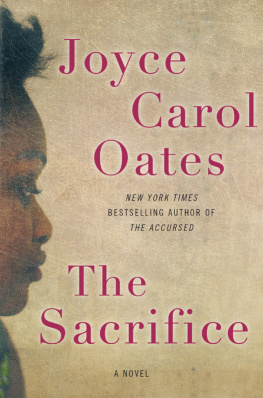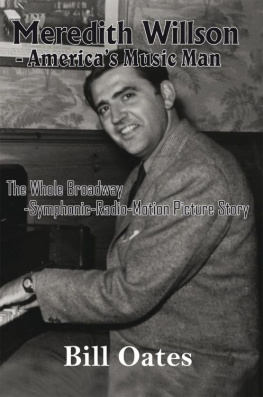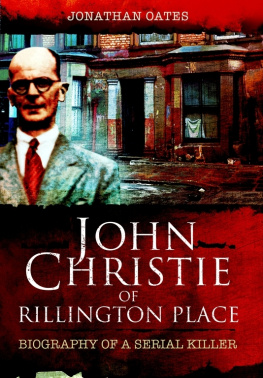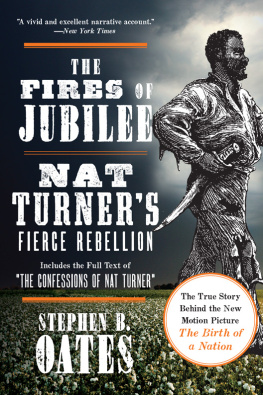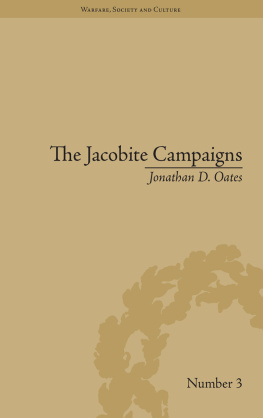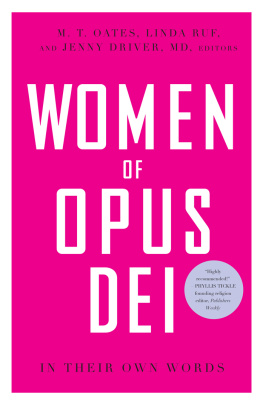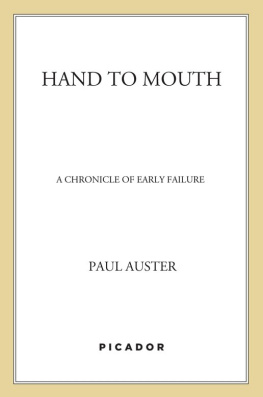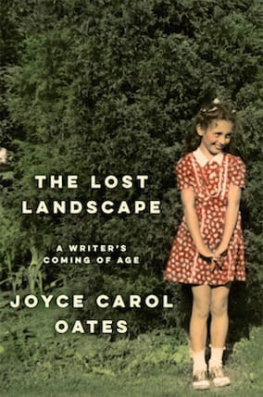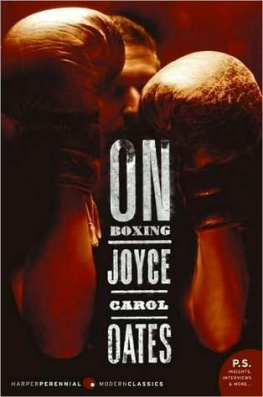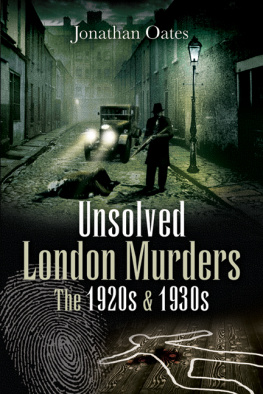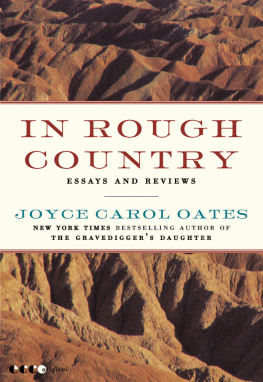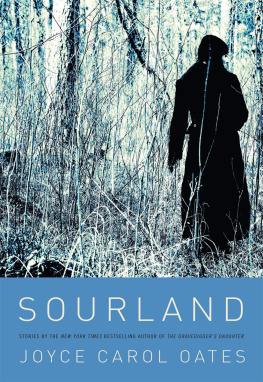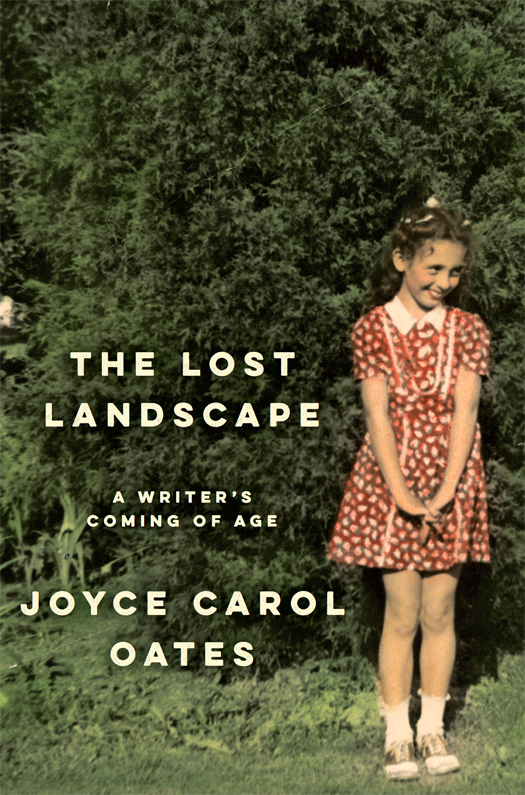
Joyce at her first desk, five years old. At home in Millersport, New York. (Fred Oates)
To my brother Fred Oates
And in memory of those who have gone away
CONTENTS
Guide
The Lost Landscape is not meant to be a complete memoir of my lifenot even my life as a writer. It is, for me at least, something more precious, as it is almost indefinable: an accounting of the ways in which my life (as a writer, but not solely as a writer) was shaped in early childhood, adolescence, and a little beyond. Its focus is upon the landscape of our earliest, and most essential lives, but it is also upon an actual rural landscape, in western New York State north of Buffalo, out of which not only much of the materials of my writing life have sprung but also the very wish to write.
Because it is essential to The Lost Landscape, District School #7, Niagara County, New York has been reprinted from The Faith of a Writer (2003), in a slightly different form. In a more substantially altered form, an updated Visions of Detroit ([Woman] Writer, 1988) has been reprinted under the title Detroit: Lost City 19621968. Other chapters have been revised significantly from memoirist pieces published in a variety of magazines, journals, and books, often in response to an editors invitation.
To the editors of these publications, heartfelt thanks are due:
Mommy & Me originally appeared, in a shorter form, in Civilization, February 1997.
Happy Chicken originally appeared in Conjunctions 61: A Menagerie, 2013.
Discovering Alice originally appeared in AARP Magazine, 2014.
Piper Cub originally appeared, in a substantially different form, in Rhapsody, November 2013.
After Black Rock originally appeared in the New Yorker, June 2013.
Sunday Drive originally appeared, in a substantially different form, in Traditional Home, March 1995.
They All Just Went Away originally appeared in a substantially different form in the New Yorker, October 1995. Reprinted in The Best American Essays 1996 and in The Best American Essays of the 20th Century. This essay incorporates Transgressions, originally published in the New York Times Magazine, October 1995.
Where Has God Gone originally appeared, in a substantially different form, in Southwest Review, Summer 1995, and was reprinted inCommunion edited by David Rosenberg, 1995 under the title And God Saw That It Was Good.
An Unsolved Mystery: The Lost Friend originally appeared, in a substantially different form, in Between Friends edited by Mickey Pearlman, 1994.
Start Your Own Business! originally appeared in substantially different forms in the New Yorker under the title Bound, April 2003; and in Conjunctions 63 (2014) under the title The Childhood of the Reader, which will be reprinted in Pushcart Prize: The Best of the Small Presses 2016.
The Lost Sister: An Elegy originally appeared in Narrative.
Nighthawk: Recollections of a Lost Time appeared originally in Yale Review, 2001, and in Conjunctions, 2014; reprinted, in a substantially different form, in Narrative, 2015.
Story into Film: Where Are You Going, Where Have You Been? and Smooth Talkappeared originally in the New York Times, March 23, 1986.
Detroit: Lost City 19621968 appeared originally, in a shorter form, in (Woman) Writer, 1988.
Photo Shoot: West Eleventh Street, New York City, March 6, 1970 originally appeared, in a shorter form, under the title Nostalgia in Vogue, April 2006; reprinted in Port, 2014.
Food Mysteries originally appeared, in a substantially different form, in Antaeus 1991; reprinted in Not By Bread Alone edited by Daniel Halpern, 1992.
Facts, Visions, Mysteries: My Father Frederic Oates, November 1988 originally appeared, in a substantially different form, in the New York Times Magazine, March 1989; reprinted in Ive Always Meant to Tell You, edited by Constance Warloe, 1996.
A Letter to My Mother Carolina Oates on Her Seventy-eighth Birthday, November 8, 1994 originally appeared, in a slightly different version, in the New York Times Magazine, 1995; reprinted in this version in Ive Always Meant to Tell You edited by Constance Warloe and in The Norton Anthology of Autobiography edited by Jay Parini, 1999.
My Mothers Quilts originally appeared, in a slightly shorter form, in What My Mother Gave Me: Thirty-One Women on the Gifts That Mattered Most, edited by Elizabeth Benedict, 2013.
WE BEGIN AS CHILDREN imagining and fearing ghosts. By degrees, through our long lives, we come to be the very ghosts inhabiting the lost landscapes of our childhood.

Carolina Oates and Joyce, backyard of Millersport house, May 1941. (Fred Oates)
MAY 14, 1941. IT was a time of nerves. Worried-sick what was coming my father would say of this time in our family history but who could guess it, examining this very old and precious snapshot of Mommy and me in our backyard playing with kittens?
LOOKED LIKE I WOULD be drafted. Nobody knew what was coming. At Harrisons, we were working double shifts. In the papers were cartoons of Hitler but none of it was funny. The nightmare of Pearl Harbor is seven months away but the United States has been in a continuous state of nerves since Hitler executed his blitzkrieg against an unprepared Poland in September 1939; by May 1941, with England under attack, the United States is engaged in an undeclared war in the Atlantic Ocean with Germany... But I am two years, eleven months old and oblivious to the concerns of adults that are not immediate concerns about me.
MY TWENTY-SEVEN-YEAR-OLD FATHER FREDERIC Oates, whom everyone calls Fred or Freddy, is taking pictures of Mommy and me behind our farmhouse in Millersport, New York; it is a day when Daddy is not working on the assembly line at Harrison Radiator, a division of General Motors seven miles away in Lockport, New York, involved in what is believed to be defense work. It is a tense, rapidly-shifting, unpredictable era before TV when news comes in terse radio announcements and in the somber pages of the Buffalo Evening News delivered in the late afternoon six days a week. But such global turbulence is remote from our farm in western New York where everything is green and humid in prematurely hot May and the grass in the backyard grows thick and raggedy. Here my twenty-four-year-old mother Carolina, whom everyone calls Lena, is cuddling with me in the grass playing with our newborn black kittens, smiling as Daddy takes pictures.
TAKING PICTURES WITH THE blue box camera. Of dozens, hundreds of pictures taken in those years only a few seem to have survived and how strange, how astonishing it would have been for us to have thought, in May 1941These pictures will outlive us!
How happy we are, and how good and simple life must have seemed to that long-lost child Joyce Carol(who did not know that she was to be the firstborn of three children)with little in her life more vexing than the ordeal of having her curly hair brushed and combed free of snarls and fixed in place with ribbons, and being dressed up for some adult special occasion.


